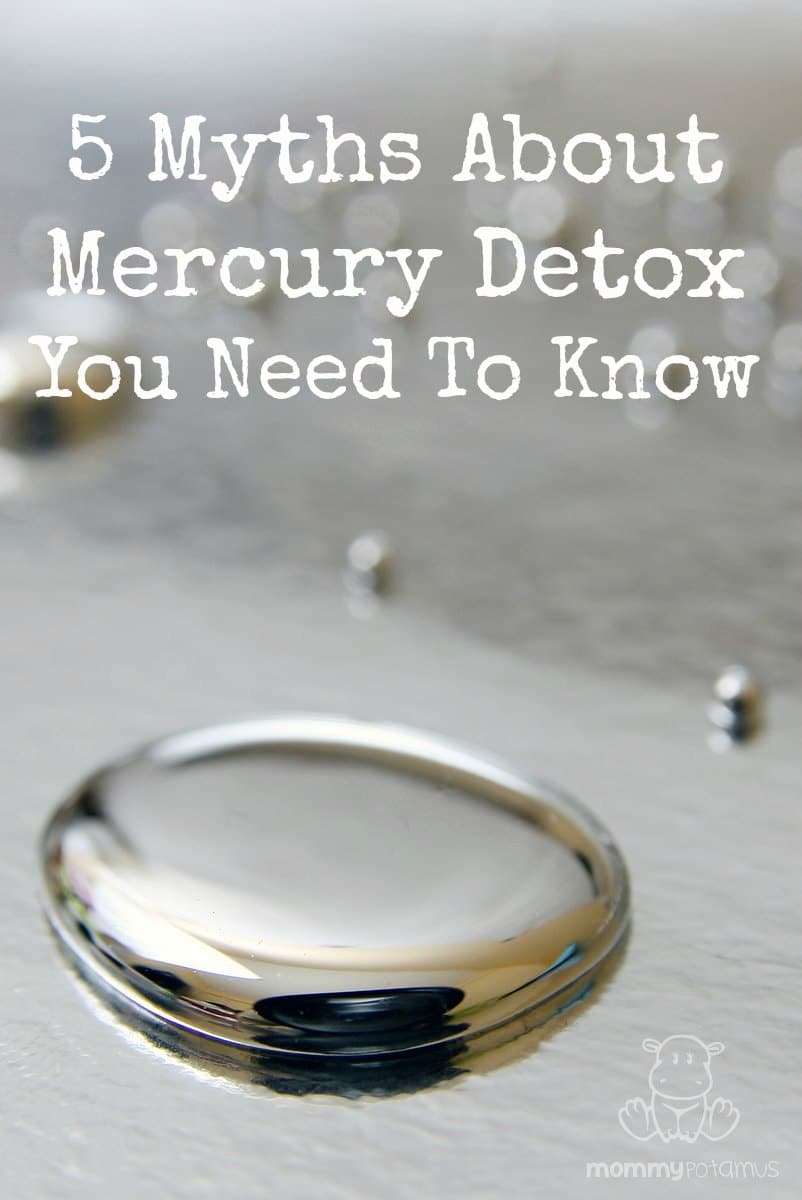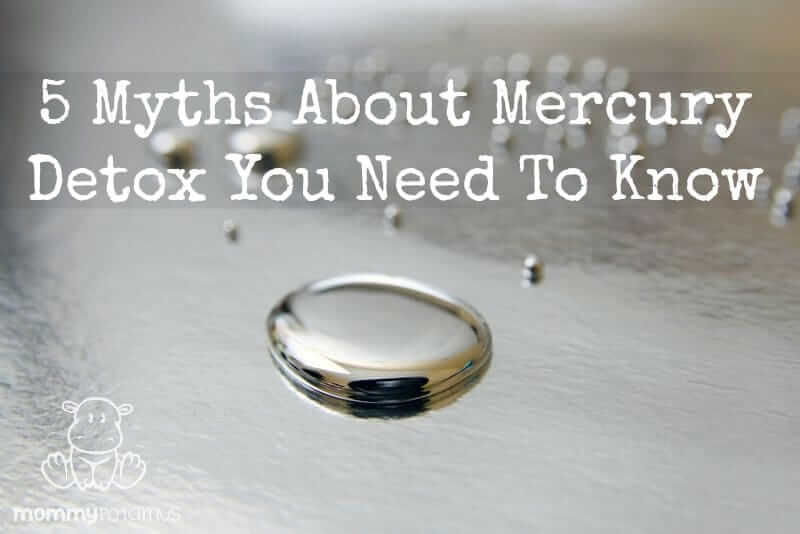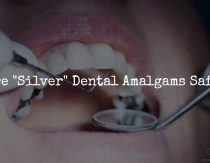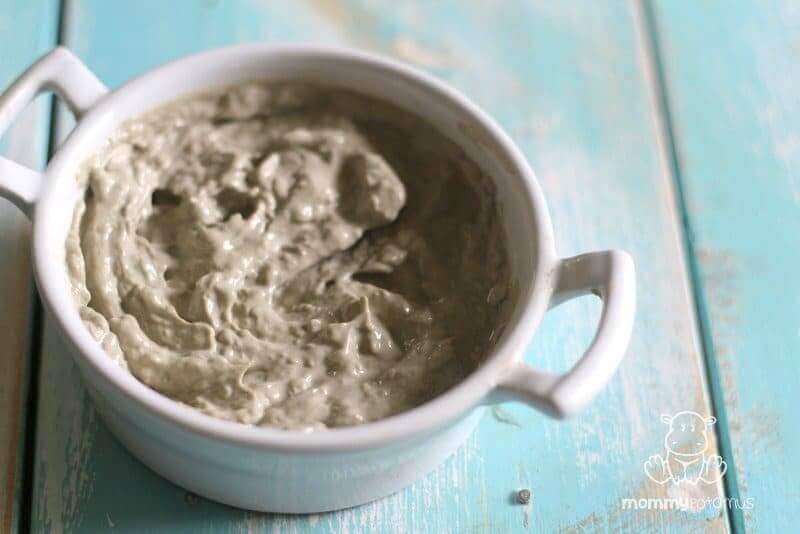Quicksilver, atomic number 80, hydrargyrum . . . Mercury. It’s been described in lots of ways throughout history, but these days just about everyone from the CDC to the World Health Organization seems to be on the same page about one thing – it’s highly toxic.
Though it’s a naturally occurring element (oddly, the only metal that is liquid at room temperature), it was only present in very small amounts in the surface environment until the past century, when industrial activities began releasing it on a massive scale. Once released, it can circulate in the environment indefinitely – a fact which has sparked an international effort to reduce mercury emissions.
Mercury can cause organ damage, immune system damage, and cognitive problems. (source) It is considered a risk factor for autoimmune disorders in women of childbearing age and has been implicated in a variety of other disorders. I wrote more about what experts have to say on the risks of mercury exposure here.
What are the most common sources of mercury?
According to the World Health Organization, dental amalgams are the primary source of mercury exposure for individuals who have “silver” fillings. (source) Though they were once believed to be inert, current research shows chewing, drinking hot liquids, brushing teeth and other activities releases mercury vapor from amalgams. (source 1, source 2) It is estimated that about 80% of the inhaled mercury vapor is absorbed by the lungs and dispersed throughout the body. (source)
There are other routes of mercury exposure as well: fish and shellfish, skin lightening creams, and pharmaceutical preservatives, for example.
The Detox Dilemma
Daddypotamus and I have tried to limit our family’s exposure by eating seafood that is low in mercury (you can find a list here), but until last year he did have “silver” fillings. I’ve already shared with you why he opted to have his dental amalgams removed, along with information about removing fillings safely and how to find a provider.
I’d planned to help him detox after the removal (because, as has already been established, exposure is definitely occurring), but after reading several books on the subject and talking to our local holistic doctor I did . . . nothing.
The problem? Once he got to his appointment the dentist expressed concerns about the approach we’d decided on with our holistic M.D., and after considering his input I wasn’t able to find an approach I felt comfortable with.
I continued reading and researching, but I’d pretty much hit a wall until I heard Chris Kresser and Dr. Chris Shade, who founded Quicksilver Scientific, discuss a new approach in this podcast, which led me to several more hours of interviews and scientific articles.
If you’re not familiar with him, Dr. Shade is a specialist in the environmental and analytical chemistries of mercury who developed a patented analytical technology for mercury speciation analysis. (In plain English, that means he’s figured out a way to detect different types of mercury in the body, as well as determine how well the body is eliminating them.)
What I learned helped pull together all the research I’ve been gathering. I highly recommend you listen to the podcast, but if you’re like me you may need to hear it 2-3 times before it all sinks in. Before you pop over, here are some key points that will help it come together.
Please keep in mind that “Best Boo-Boo Kisser South Of Puckett’s Gas Station” is about as official as things get for me professionally. I am not a doctor and this is not medical advice. If you need some convincing on this, read my full disclaimer where I say it over and over again. Okay, let’s jump in!

Myth #1: A single diagnostic test can detect all forms of mercury
When it comes to testing individuals for mercury, it’s often assumed that all forms of mercury are equally represented in the results. However, according to Dr. Shade, the form of mercury found in amalgams (inorganic mercury) doesn’t show up in hair analysis, and is poorly represented in blood tests. It might show up in urine, but only if the body’s detox pathways are functioning optimally.
On the other hand, organic mercury (such as methylmercury found in fish) shows up in hair and is better detected in blood. While that’s good information to have, it’s far too easy to overlook the presence of inorganic mercury, which is highly toxic to the body.
Dr. Shade also brings up another issue with testing – challenge tests. Basically, the idea here is that some individuals with mercury exposure have a difficult time eliminating it. So it may be there, but looking for it in blood/urine/hair isn’t all that helpful if it’s trapped in tissues. When practitioners suspect this might be happening, they sometimes recommend a “challenge test” that uses a chelator like DMSA (meso-2, 3-dimercaptosucccinic acid) to mobilize mercury in the body, then measures what it mobilizes.
Think of it like this: You have a glass of water with sediment in it. If you draw water off the top and test for sediment, it will come back relatively “clean” because the sediment is at the bottom. However, if you stir the glass first, a lot more sediment will be present in the sample. Challenge testing is kind of like that.
The potential problem with this approach is that the low, mid-range, and high levels for mercury were established in people who didn’t receive a chelator. In other words, their “glasses” were not stirred before samples were taken. Those who had a lot of sediment in their samples probably had a lot more sediment at the bottom. In the stirred samples, the overall amount of sediment might be much smaller, but the lab tests will show them to be about equal. This may cause some people to believe that they have “high” levels of mercury when in reality they might have low/average levels compared to the rest of the population. To make the situation even more challenging, some people with severely compromised detox pathways may not excrete much mercury even with the challenge test. This might lead a practitioner to conclude that not much mercury is present when in fact it is.
To solve these problems, Dr. Shade adapted a technique he developed for detecting different forms of environmental mercury – either from chronic or acute exposure – into a diagnostic lab test that doesn’t utilize challenge testing. It’s called the Tri-test, and it determines not only the type of mercury present, but also how well the body is eliminating it. You can find the lab test here. (This is not an affiliate link. I have no financial connection with the lab except as a customer.)
Myth #2: Chelation is the best starting point for everyone
Most mercury detox protocols involve the use of chelators – either natural ones like chlorella or prescription ones like DMSA (meso-2, 3-dimercaptosucccinic acid) or DPMS (2,3-dimercaptopropan-1-sulfonic acid) sometimes used in challenge tests. While they can be useful in mobilizing mercury in the body, according to Dr. Shade that’s only helpful if the body’s detox pathways are working properly and they can flush it out.
For certain people who have compromised detox pathways (either due to the effects of mercury accumulation or genetic mutations such as MTHFR), the mercury may fail to leave the body and move to another part of the body instead. The big concern is that it might move to the brain or another vital organ, which may cause more harm than wherever it was before. (This is also considered by some to be a concern with respect to challenge testing.)
Here’s how Dr. Shade explains it in the interview.
There are plenty of capable practitioners who have made great strides with people with DMPS and DMSA, but these were chelators that were designed for industrial environments. DMPS was made for factory workers in the battery industry in Russia and Eastern Germany that were exposed to very high levels of lead and cadmium, and they were able to take these otherwise healthy people that were clearly just metal toxic and bring down those loads and get them back to work.
But the problem is a lot of the people that we deal with have multifactorial problems. There are some infectious problems, there are leaky gut problems, there are some kidney problems, and that’s leading to them accumulating toxins, like metals, and them being hyper-toxic or hypersensitive to those metals. So trying to grab those metals and say, ‘Well, that’s the only problem; let’s just force them out through the kidneys,’ often leads to more harm than good.”
Rather than take this approach, Dr. Shade starts by supporting the body’s detox pathways – making sure the drains are open, if you will. In scientist-speak that sounds like this:
On a microcosm, that’s the cell and that’s the chemistry in the cell, and so that’s going to turn up the metal’s resistance of the cell as it pushes things out of the cell into the circulating fluids, but that’s also responsible for the macrocosmic effect of moving those metal-glutathione conjugates out into the urine flow, out into the bioflow. So on one level, we turn up the cellular resistance. On a larger level, we turn up what’s called the drainage or the movement of those out of circulation and into fecal excretion and urinary excretion. So upregulating of the glutathione system is the detox approach that we use.”
In practical terms, what you need to know is that he’s developed a supplement protocol that supports detoxification. If you live in a Direct Access Testing (DAT) state, you can order their tests directly. However, in most states the tests need to be obtained through a practitioner. If you don’t have one near you, they do have a practitioner – Dale White, LAc – who works with long-distance clients. You can find a list of DAT states, more info on ordering, and Dale White’s contact information here. (Again, this is not an affiliate link.) Supplements can be ordered directly.
Myth #3: Mercury affects everyone the same way
This myth is not directly related to the podcast, but I think it’s worth including. As mentioned in this post on dental amalgams, some researchers believe that certain individuals are genetically more vulnerable to the adverse effects of mercury than others.
This analysis of a study on children found “evidence of harm,” including neurobehavioral deficits and kidney damage, in children who were exposed to mercury via dental amalgams. The group that seemed to be most susceptible were boys with the CPOX4 genetic mutation, but the analysis says that at least five other mutations “appear to convey increased susceptibility to mercury toxicity.”
Historically, some practitioners used to believe there was a specific cutoff point between “of concern” and “not of concern” numbers. However, as we learn more about epigenetics (the interaction between our genes and environmental factors), the cutoff point seems to be more nuanced.
Myth #4: You can’t detox until all amalgams are removed
So here’s a question that a lot of patients are often concerned with, which is we do the testing, we find out they have high levels of mercury, and they still have dental amalgams, but maybe for financial reasons or where they live, they can’t get them, at least, all taken out immediately, and they want to know whether they can start treatment when they’re still present. And in the past, of course, the idea of starting chelation when you still had amalgams, was not great.” – Chris Kresser
As someone who has been through this with my husband (having to wait until budget and provider availability were both in place), I was SO HAPPY to hear Dr. Shade’s response. Basically, he reiterated that chelation is not a good idea for the reasons discussed above, but optimizing detox pathways with the first phase of his protocol is considered appropriate.
With this system, you can. As I said, you start low and you work up high. You’re not going to go to the highest levels of this while you still have amalgams, but you can do the earliest levels and not have a problem at all.”
Myth #5: You absolutely must have a lab test before getting started
One of the things Chris Kresser brought up in the interview is that many lab tests are not covered and some individuals need to save their money for treatment. While both of them agreed that lab results are helpful, I love that Kresser asked this question:
So is there any risk in someone—a clinician or a patient—doing a therapeutic trial of, like, the Detox Qube protocol without doing the testing?
Dr. Shade’s response:
No. The difference is you have to listen more. You have to listen to your body and your symptoms more and be just more aware of how it’s going. The one thing that is difficult with treatment is when the urine-to-blood ratios are bad, so I would preemptively do kidney support with it. If you do the testing, you decide to add it or don’t add it. If you’re not going to do the testing, absolutely add the kidney support just as a prophylactic measure. And then just be aware of how the treatment is going, and don’t push yourself too hard. If you’re feeling very symptomatic, back up. But there’s no problem as long as you do that.”
This article was medically reviewed by Madiha Saeed, MD, a board certified family physician. As always, this is not personal medical advice and we recommend that you talk with your doctor.
Questions about mercury detox?
I’m not an expert, but I am working with a practitioner who is very knowledgeable about Dr. Shade’s protocol. If you have a question leave it below and I’ll see what I can find out for you! (Update: I am not able to give – or pass along – medical advice pertaining to specific situations, but if you have general questions about mercury detox please let us know!)





